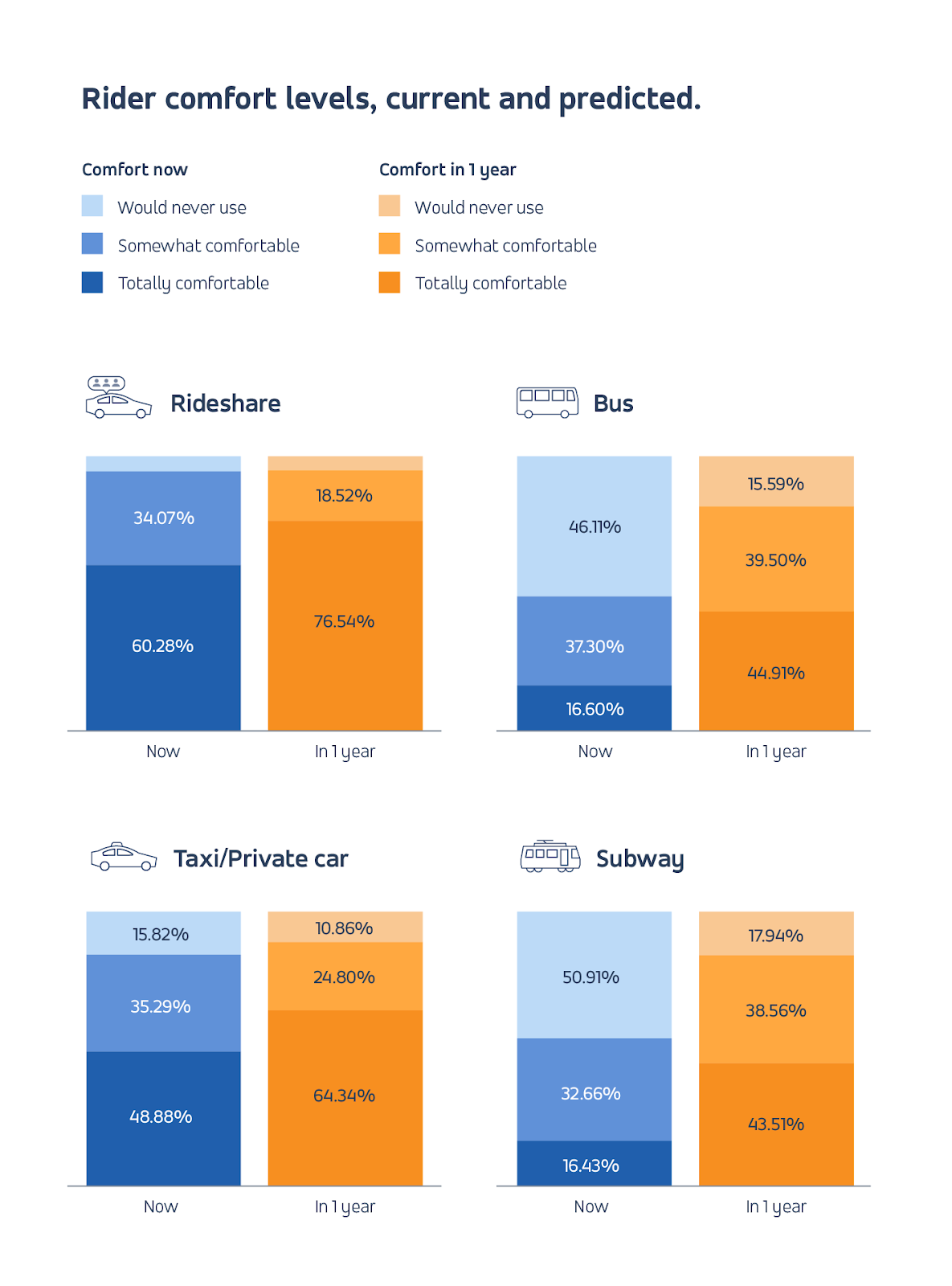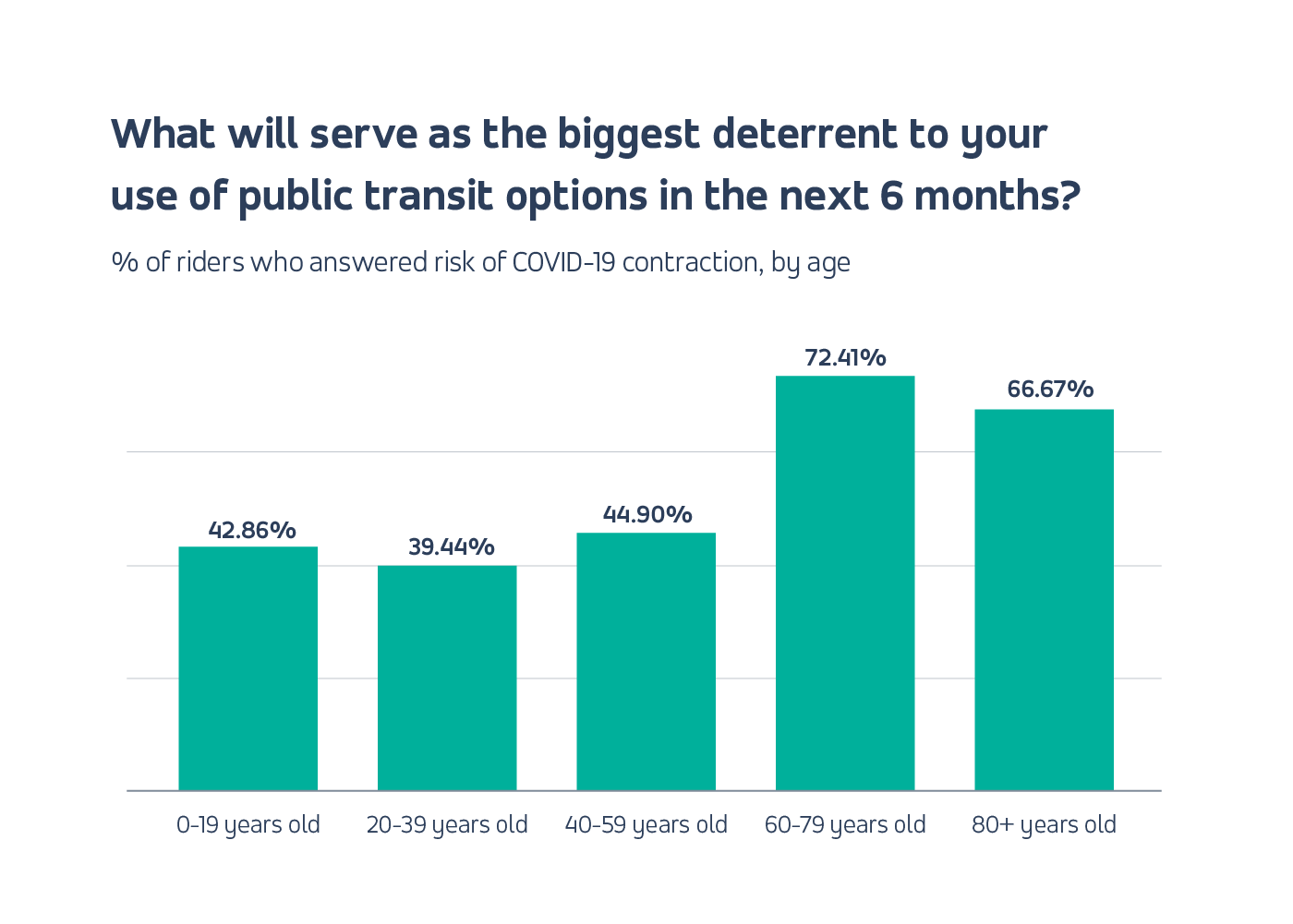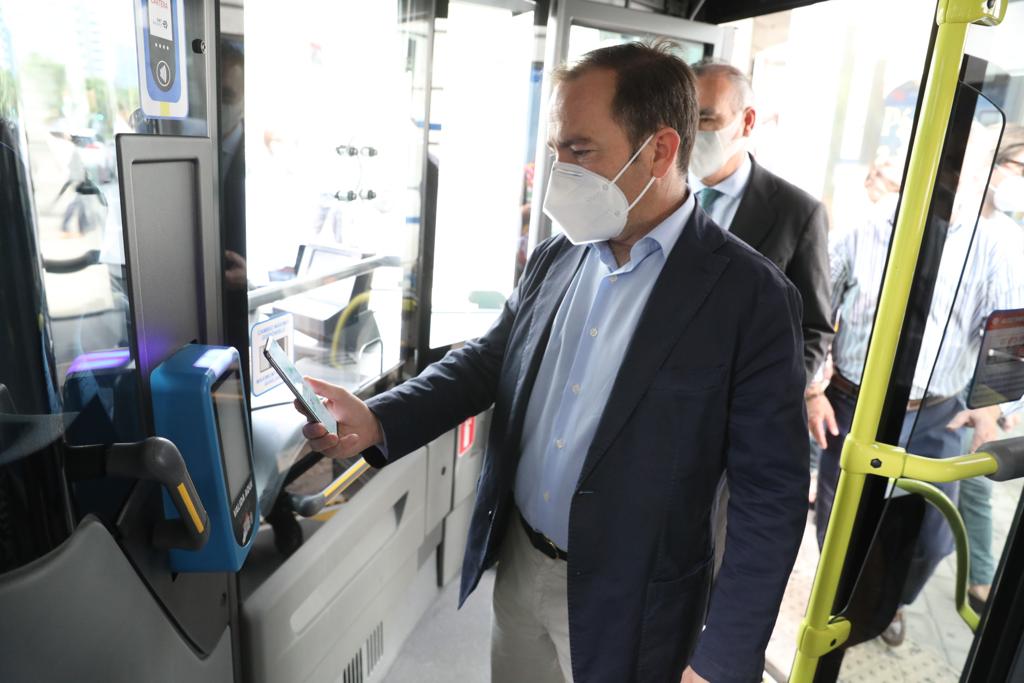As we’ve all been learning to live with the pandemic as a way of life (for now), public transit agencies have seen their ridership plummet as many people stay at home, while others fear riding on transit even though the studies show fear got ahead of science. Understandably, riders remain skeptical, so we went to the source to find out why. How did the pandemic change riding habits? Why are people staying away from transit? What will it take to get them back on board?
In July, we conducted a survey to listen and learn from 597 Via riders in Arlington, TX, Jersey City, NJ, New York City, NY, and Washington, DC. The responses, which were remarkably consistent across each city, provide valuable insight into what transit agencies can do right now to build back rider trust. Here’s what we found:
Riders want to return.
It’s no surprise that riders feel least comfortable right now using buses or subways and most comfortable in private vehicles. While only about half of riders say they might feel comfortable riding a bus within the next month, over 84% of riders feel they would be somewhat or entirely comfortable riding a bus a year from now.
Responses regarding subway travel follow a similar pattern. It’s clear lapsed riders want to get back to transit, but don’t feel it’s safe just yet. A bit of tech can go a long way to accelerating the return of the 45% of riders who predict feeling totally comfortable with transit in a year, as well as bringing the remaining 55% back to pre-COVID comfort levels.

Different riders, different concerns.
Every single rider views safety through a unique lens. One key finding this survey revealed is that older riders are significantly more likely than their younger counterparts to cite risk of COVID-19 contraction as the single biggest deterrent to riding public transit. In fact, when comparing riders aged 40-59 to those between 60-79, this difference is 27.5%.
For transit agencies and cities, understanding these dynamics is crucial. While older riders are less likely to use transit due to the pandemic, it’s clear that increased safety measures will play a huge role in drawing them back. These same safety measures will prevent younger riders — who state lesser, but still notable, levels of COVID-19 concern — from drifting away from public transit.

Wait times are still on their minds.
While 64% of riders said that they would be willing to wait an additional 5 minutes for public transit for the guarantee of a socially-distanced ride, only 20% are up for an extra 10 minutes or more.
This, of course, puts operators in a delicate position. Though safety has become paramount, nobody wants to stand around for an extra half hour because they happened to be last in line at the bus stop and vehicle capacities have been reduced. Instead, measures put in place must not radically disrupt a trip. Frustrating service reductions will only drive riders further away from public transit.

TransitTech can solve what matters most.
With limited resources and time to adjust operations during the pandemic, transit agencies have an opportunity to focus investment on efforts that will actually change rider comfort levels, according to riders themselves.

From our survey data, it’s clear that riders care most about safety measures like social distancing and contact tracing, but are less concerned about gloves or hand sanitizer being provided in-vehicle. Public transit agencies should focus on delivering the most impactful features to riders and can easily leverage technology to do so.
TransitTech can help riders effectively social distance by enabling seat reservations. A majority of riders (54%) surveyed were open to the idea of reserving seats on public transit in advance to ensure at least six feet of distance between them and fellow passengers.
When asked how they want to make these reservations, riders reported an overwhelming preference for an app-based reservation system, as opposed to online or phone.

And we’re not just talking 20-year-olds. Rather, every single reporting age group, including those 80 and up, said an app would best suit their needs. Of course, it’s critically important to integrate phone booking for those without smartphones, but agencies that can also offer app-based reservations might have the best chance of bringing their riders back to shared transit. This reservation data can also lead to retroactive contact tracing to reassure the nearly 50% of riders who report that this particular capability is critical for their comfort onboard.
Another simple way to increase rider comfort is by utilizing technology to provide real-time information on services. With bus and train timetables more subject to change now than ever before, 69% of riders surveyed indicated that regular updates regarding trip departure times and trip duration would increase their use of public transit.
The coronavirus-related decline is only the latest in a long-term trend of decreased ridership across US public transit, yet the pandemic represents a defining moment for transit leaders. Riders won’t return unless they can see the changes agencies are making in the face of COVID-19. Transit leaders can take advantage of this moment and employ lasting tech-enabled solutions to combat challenges and protect the health and safety of their riders.




